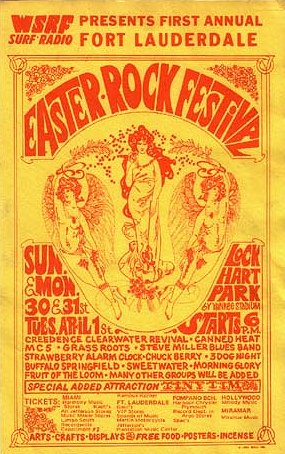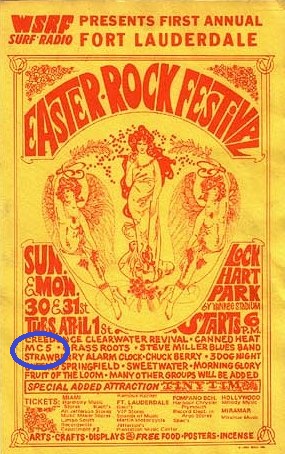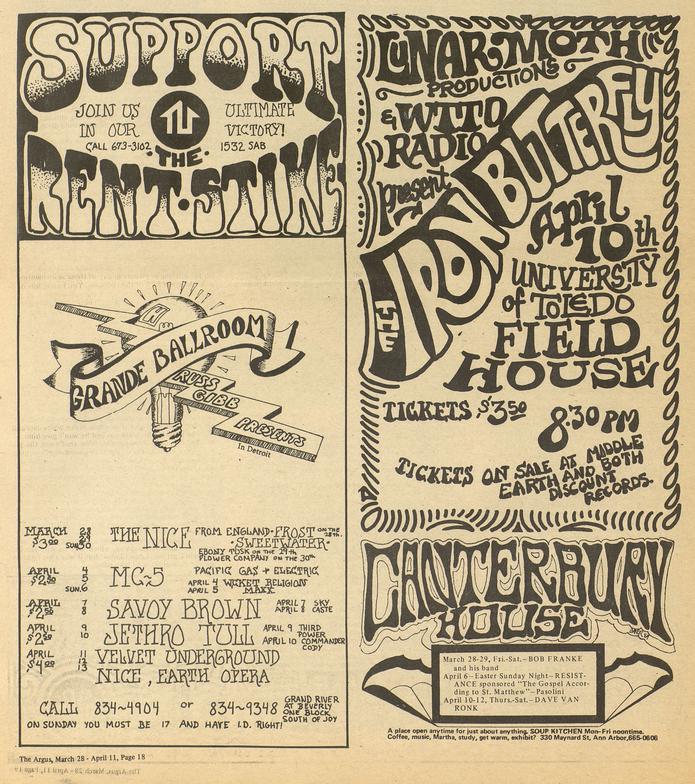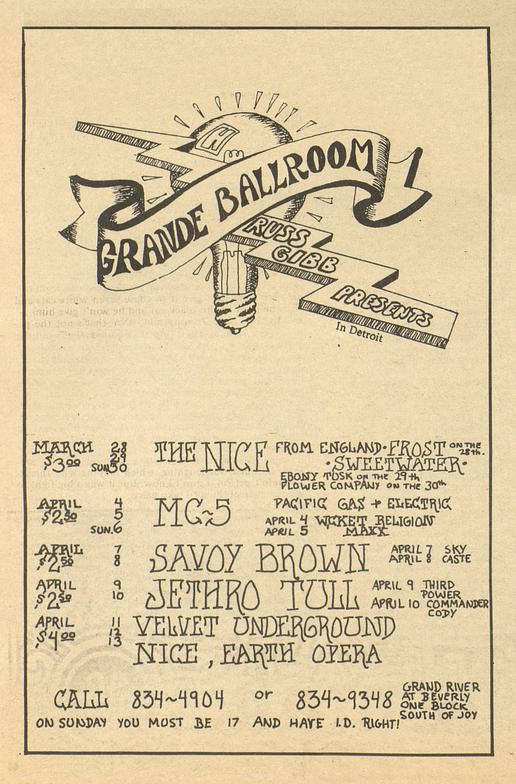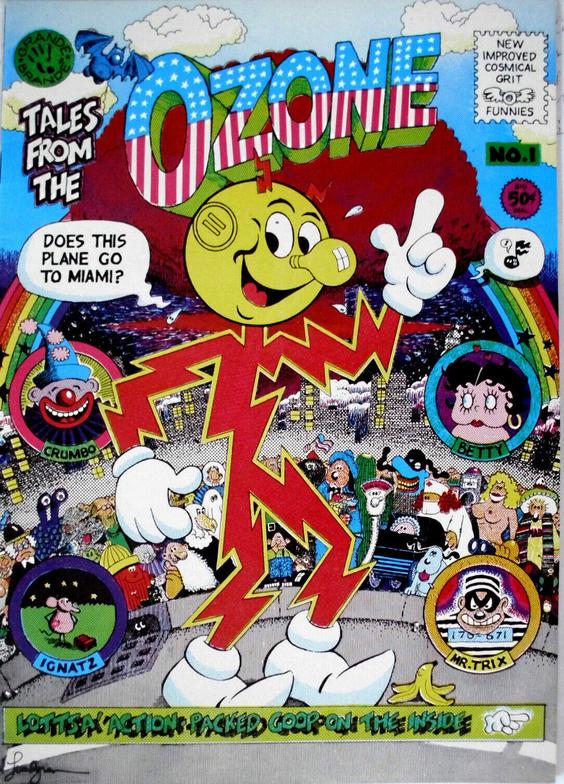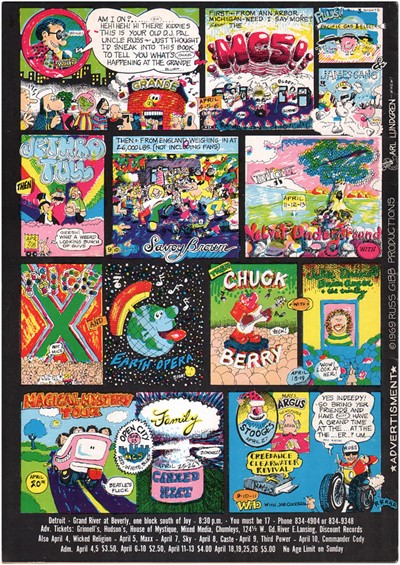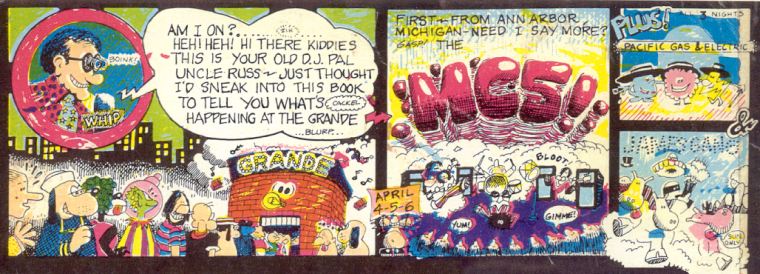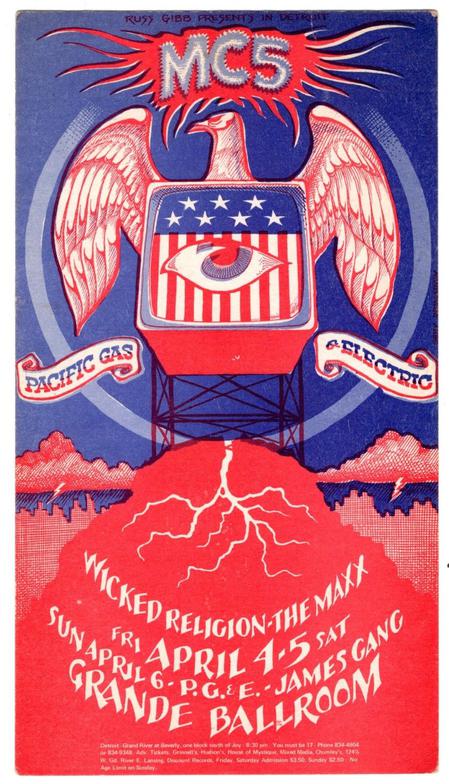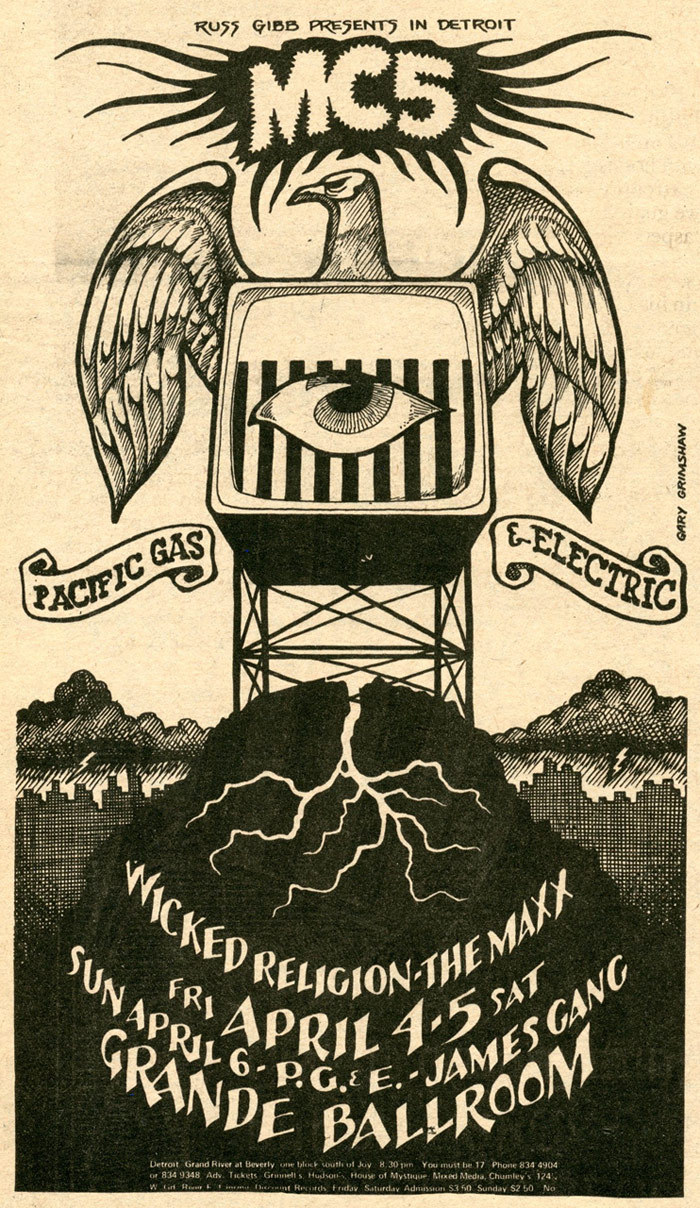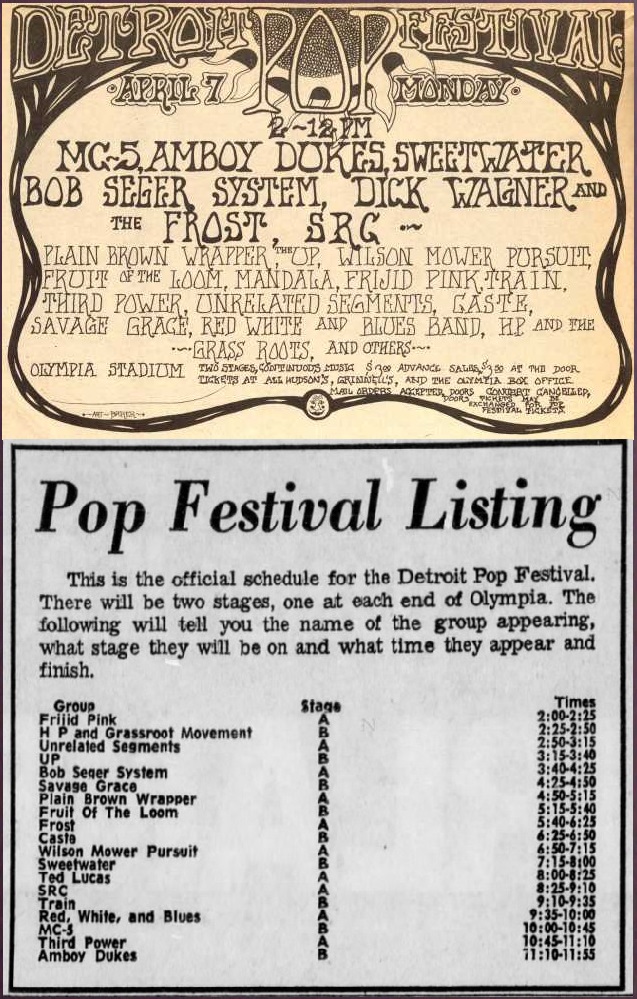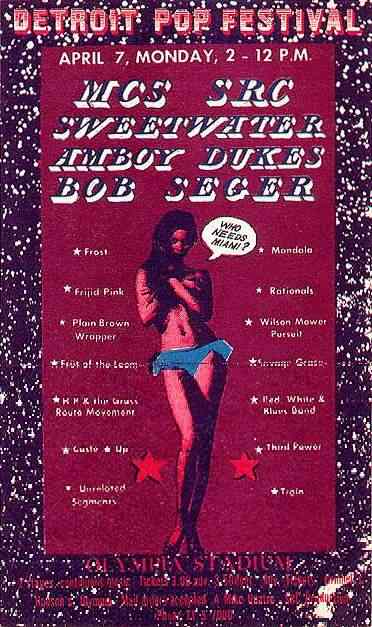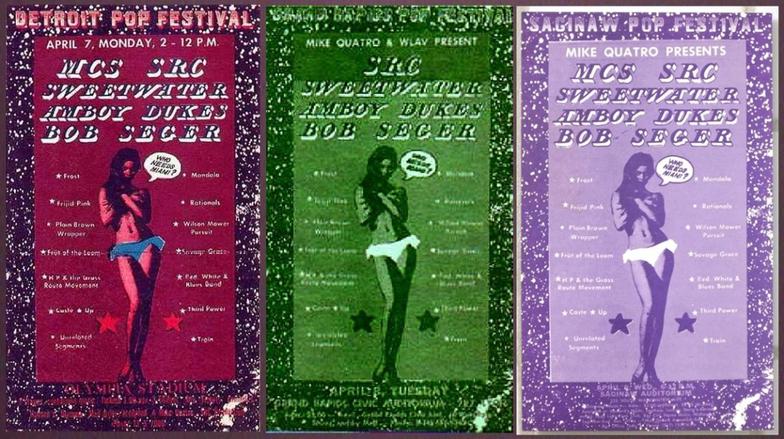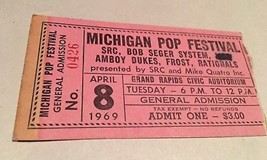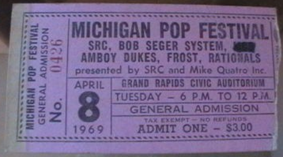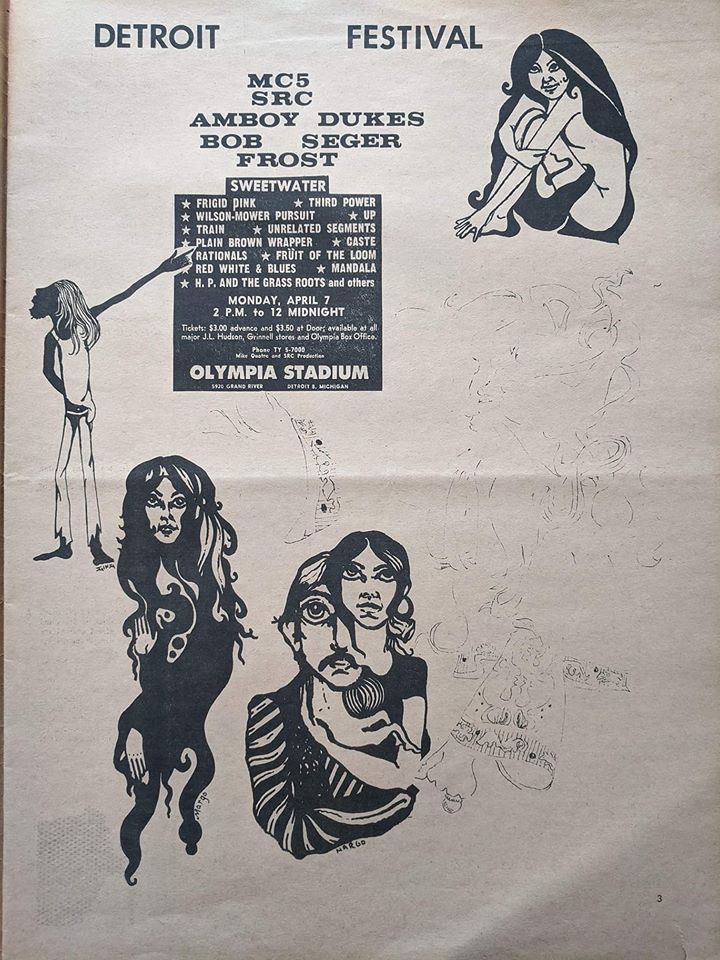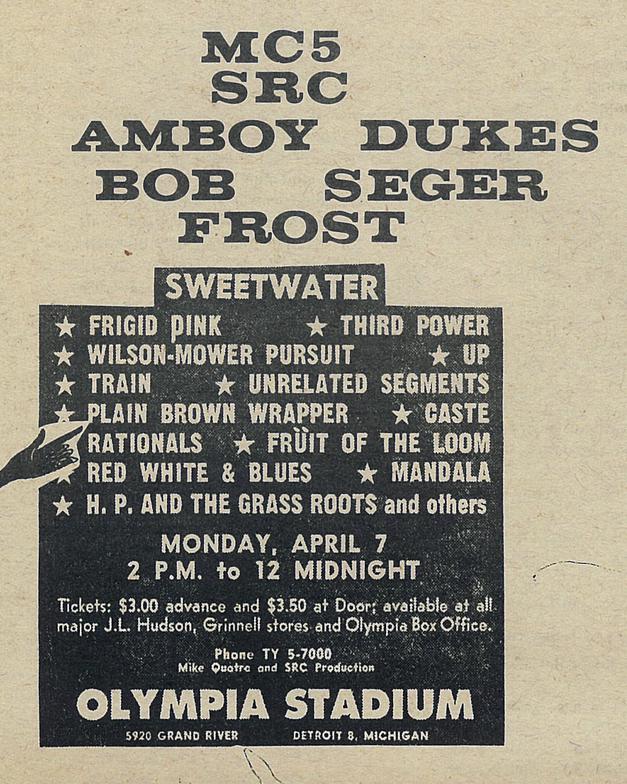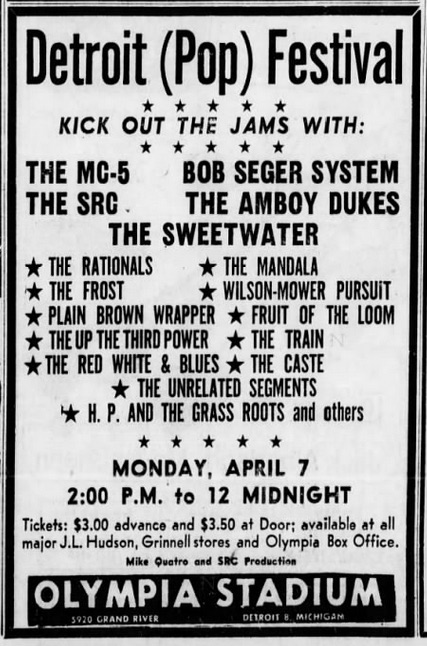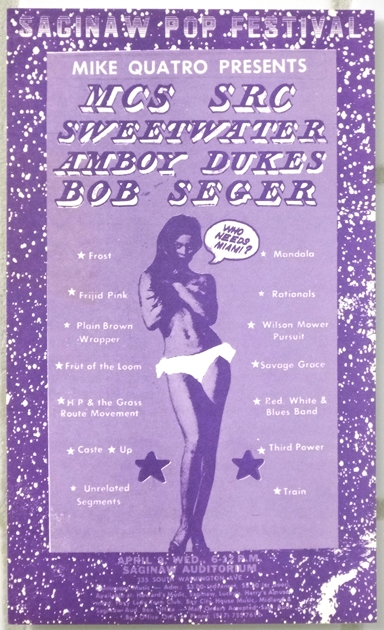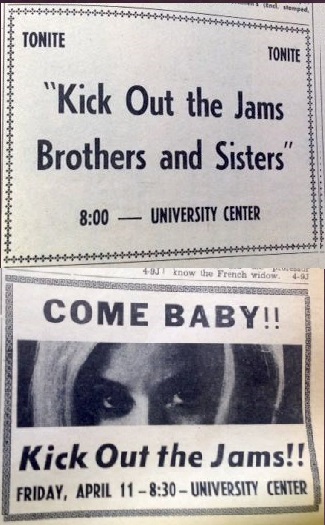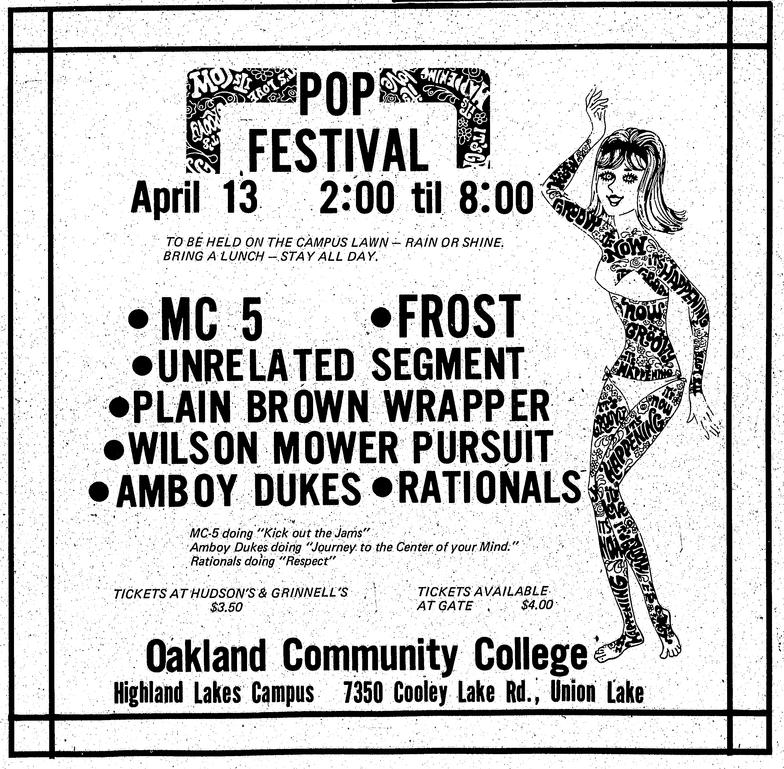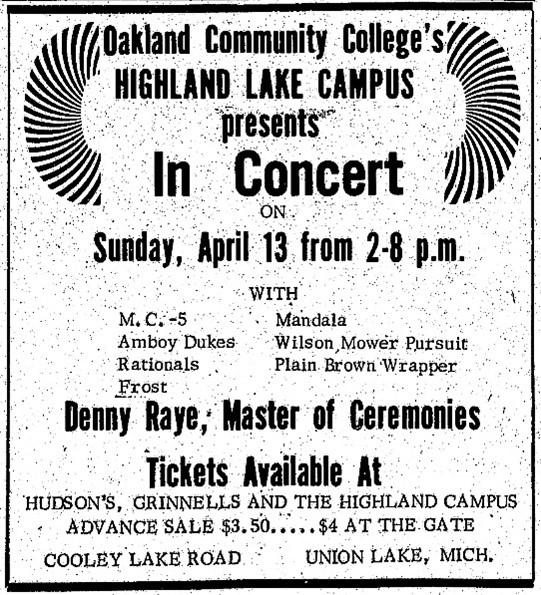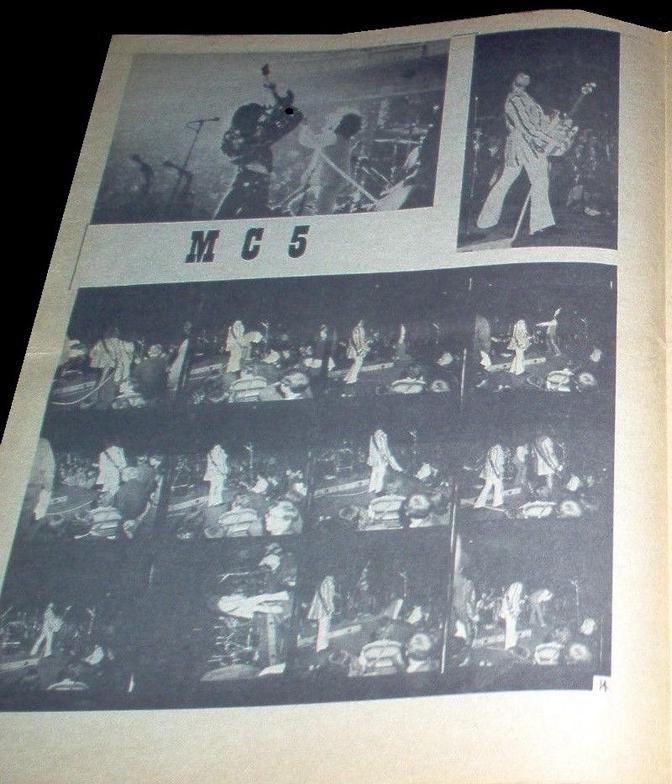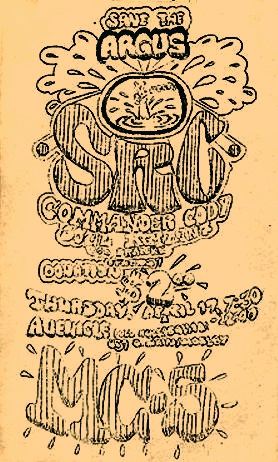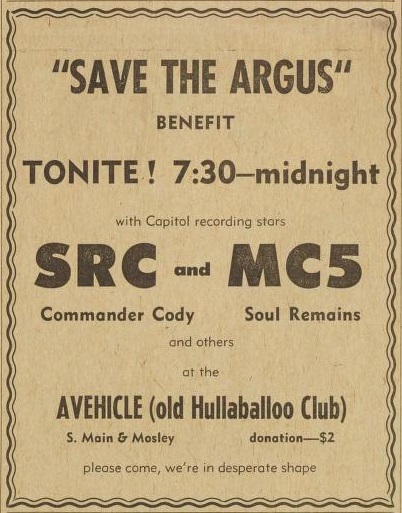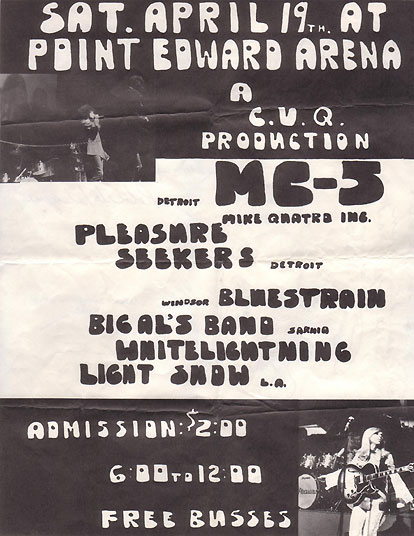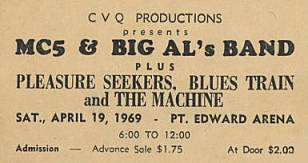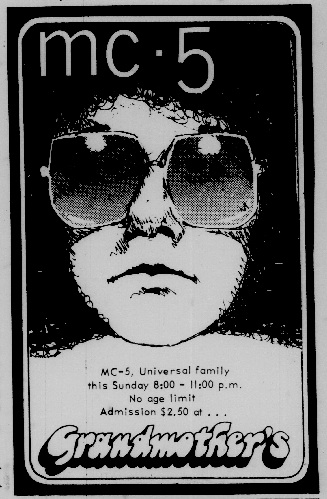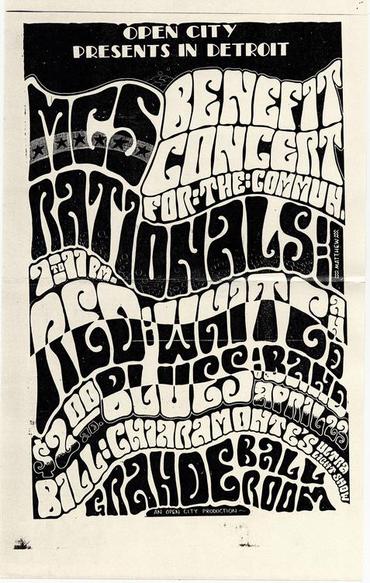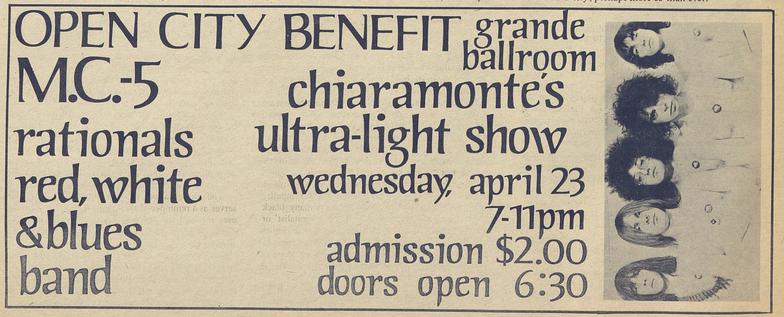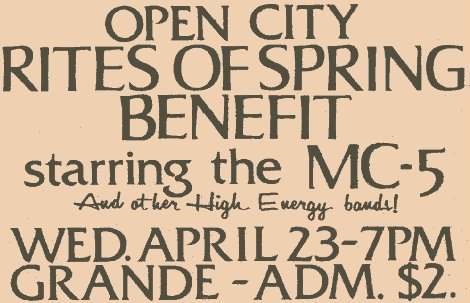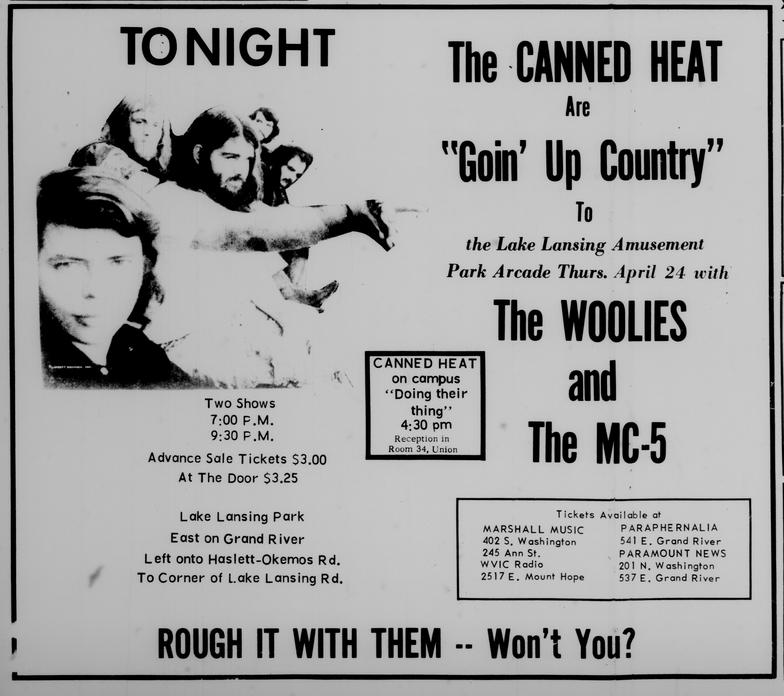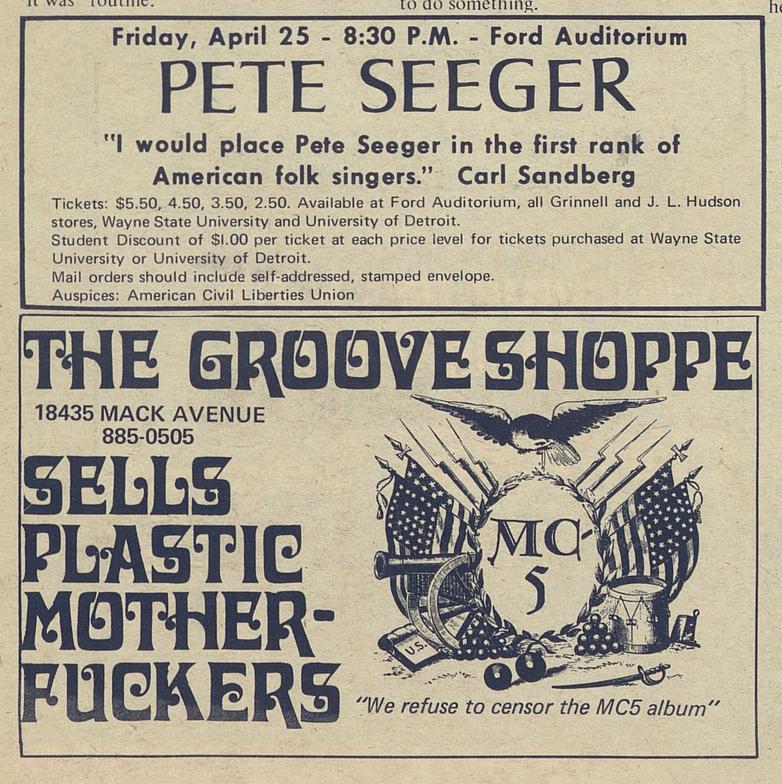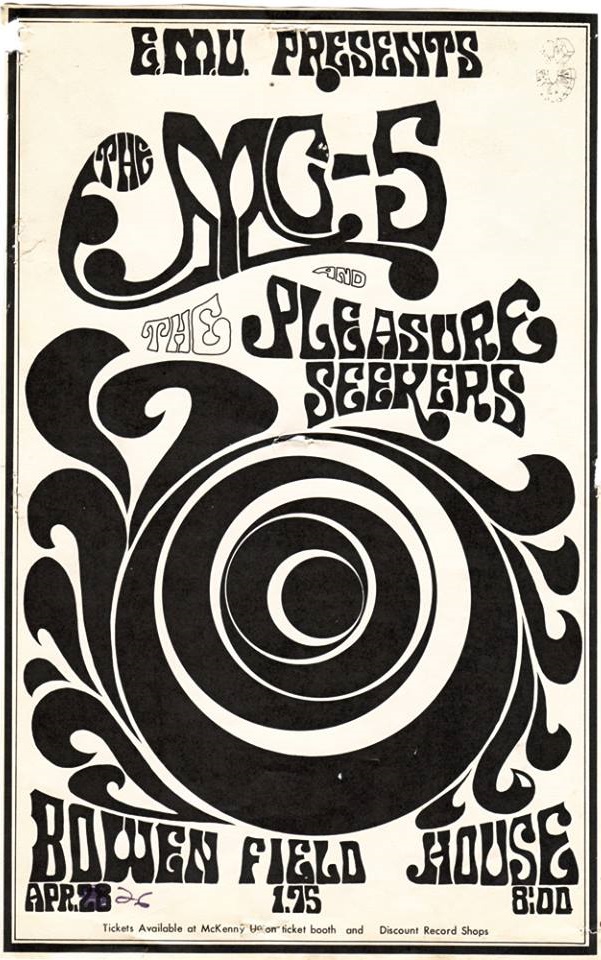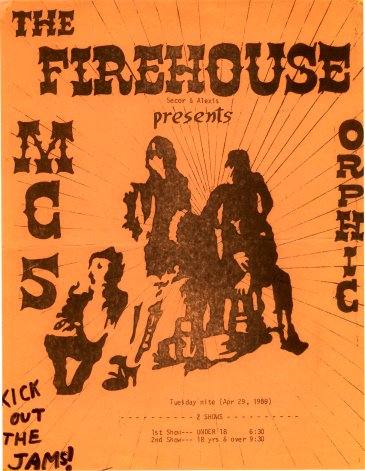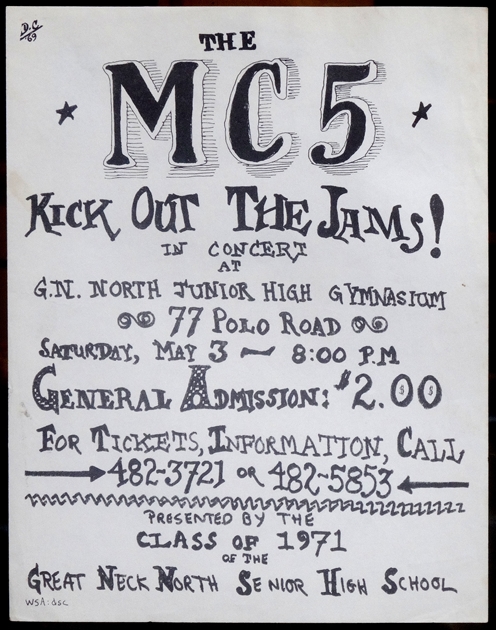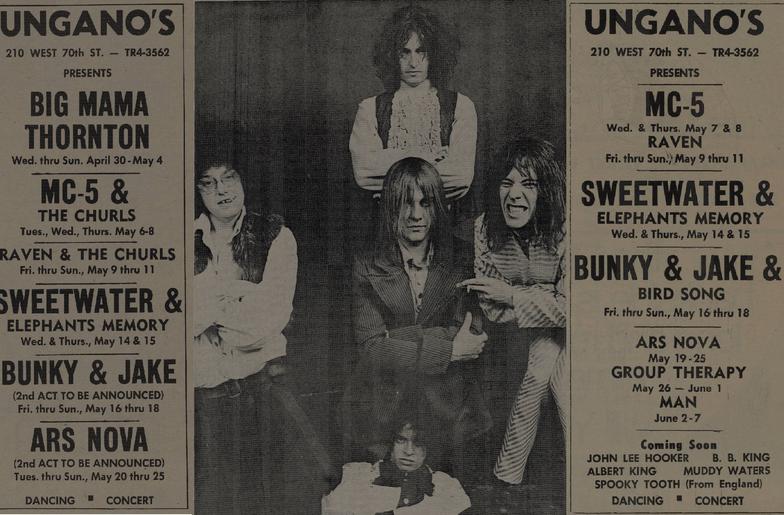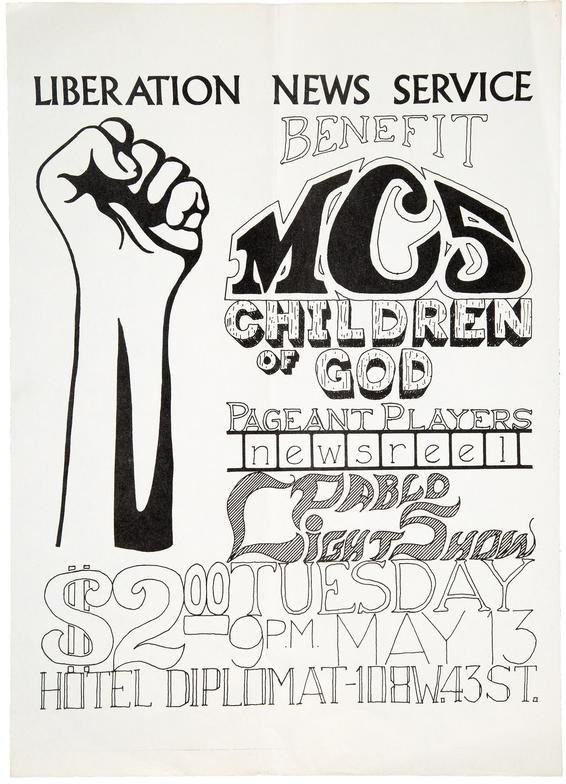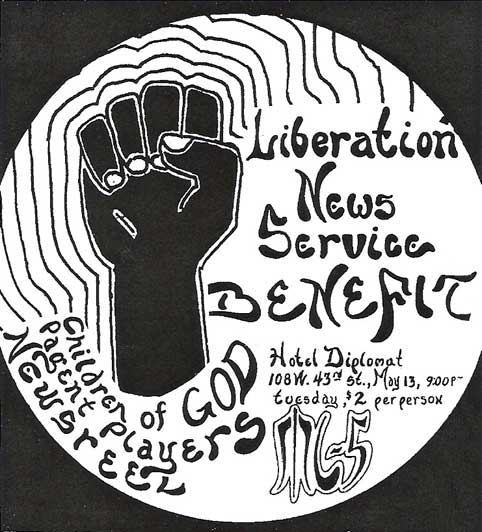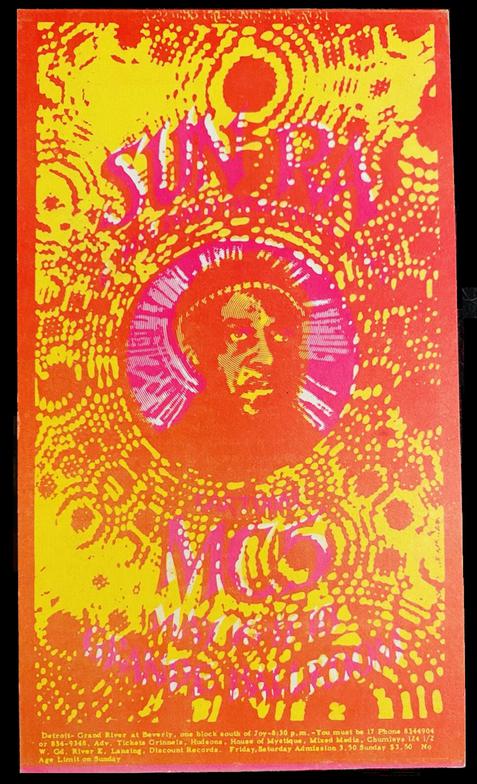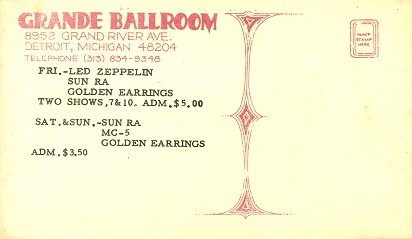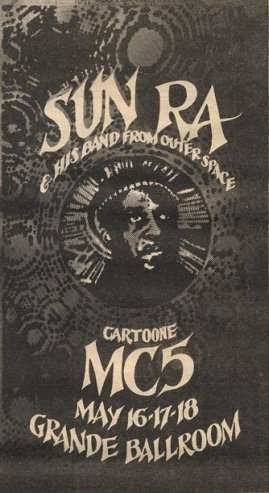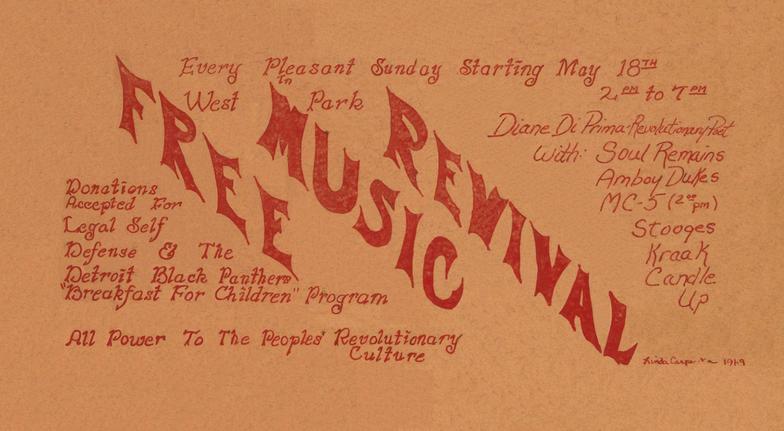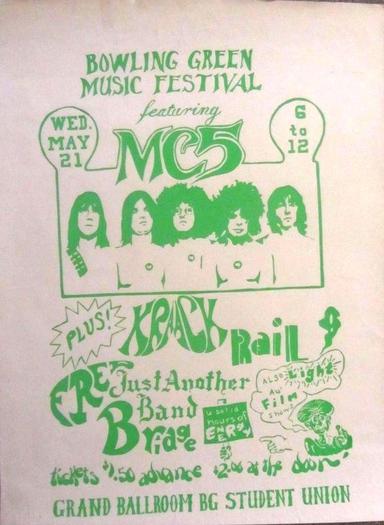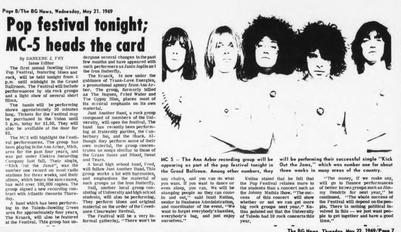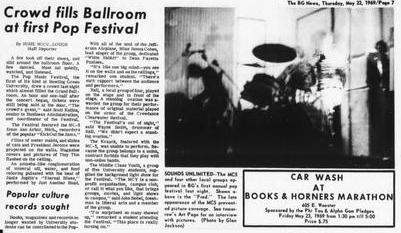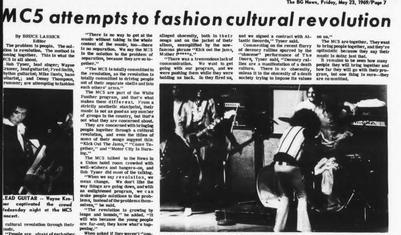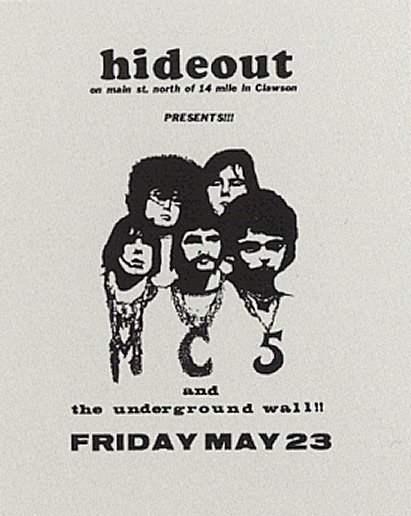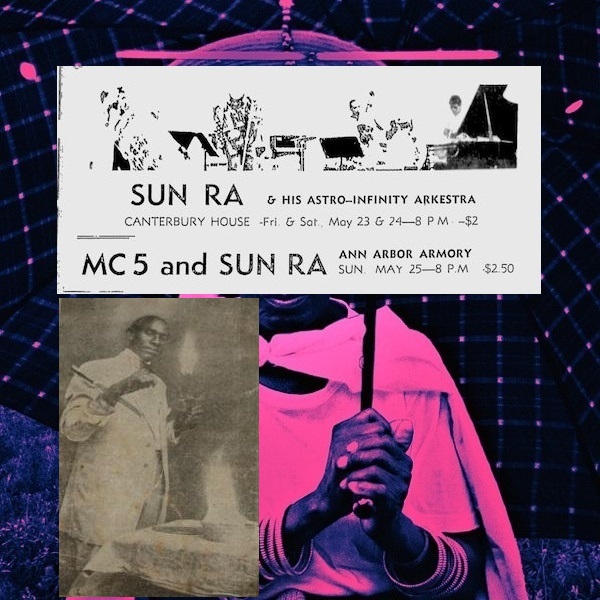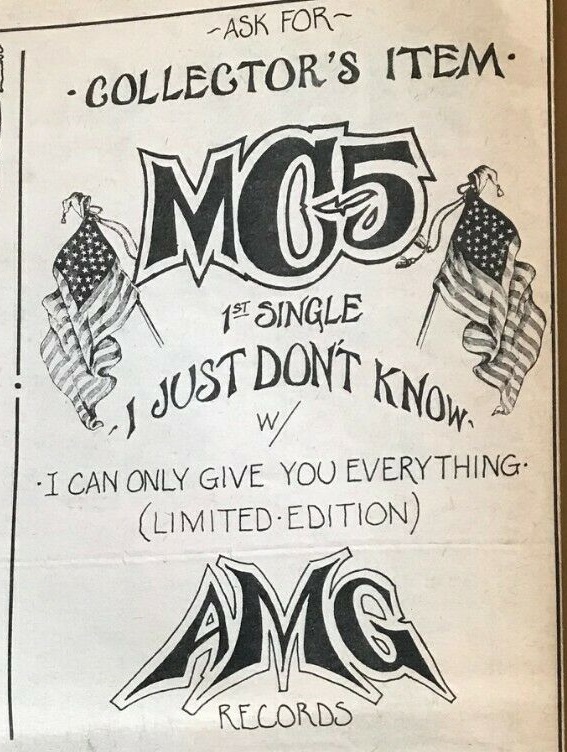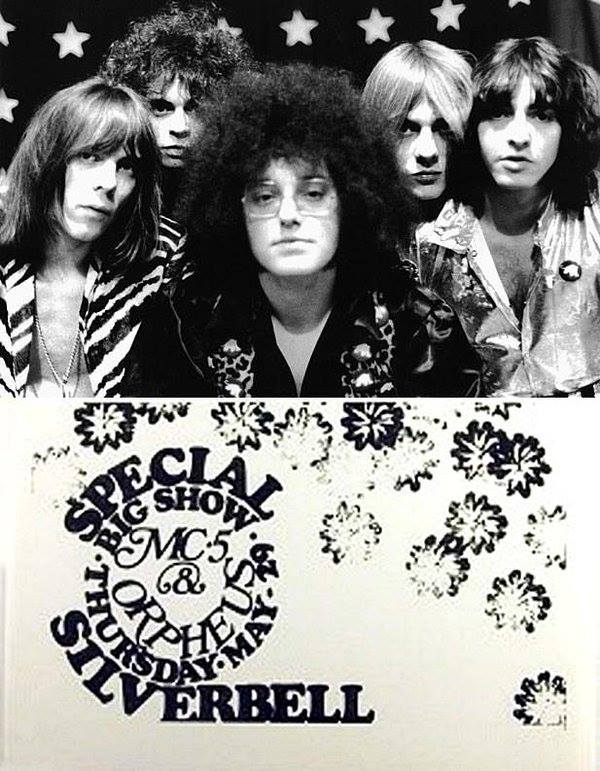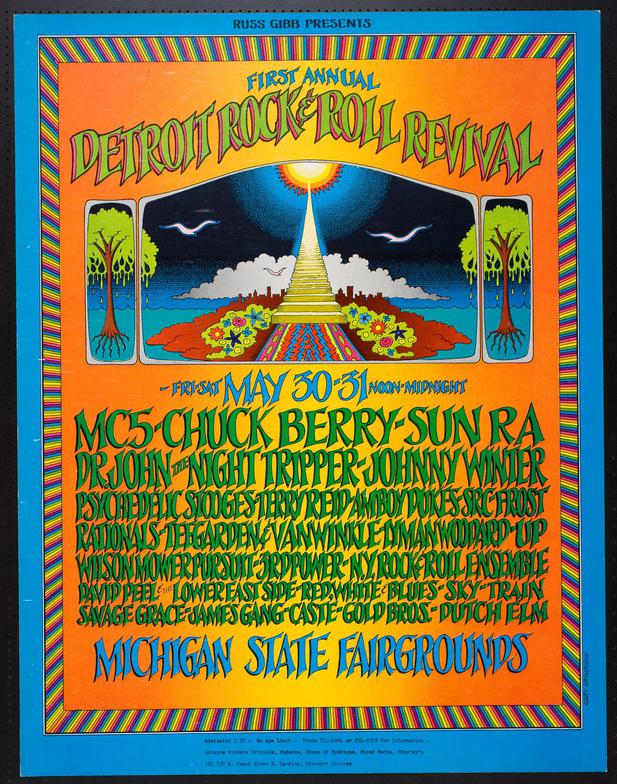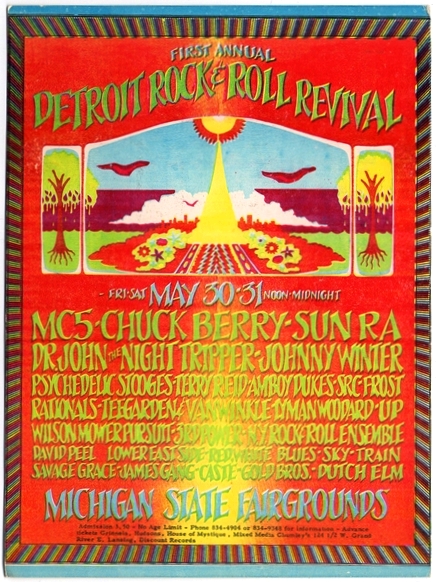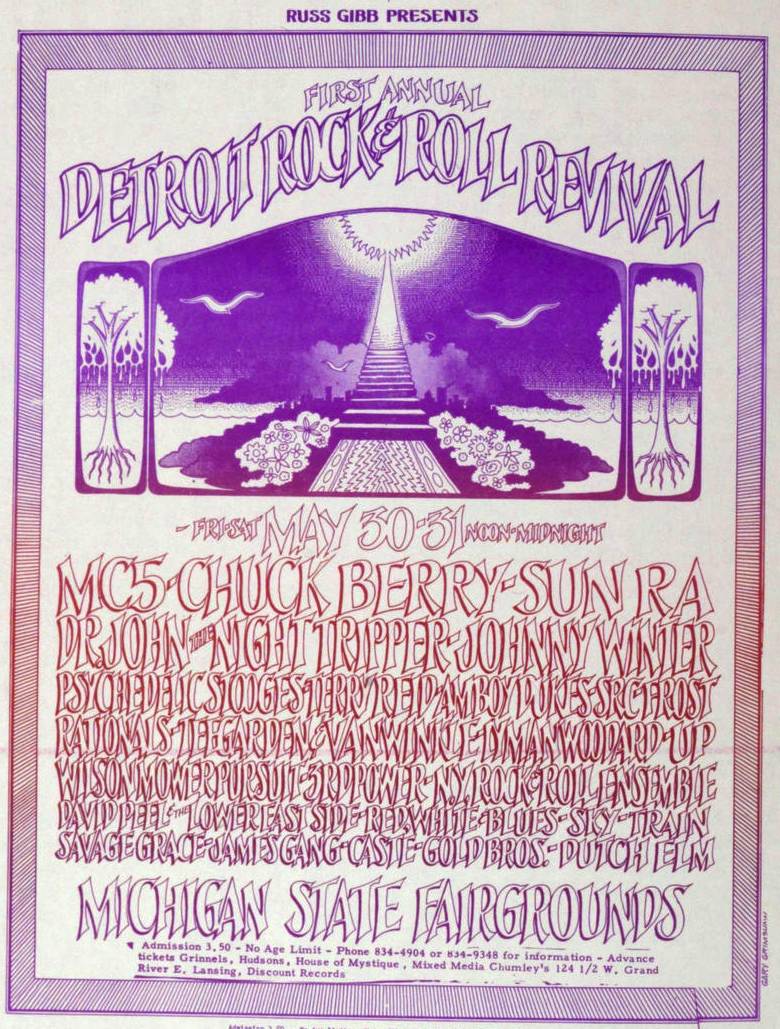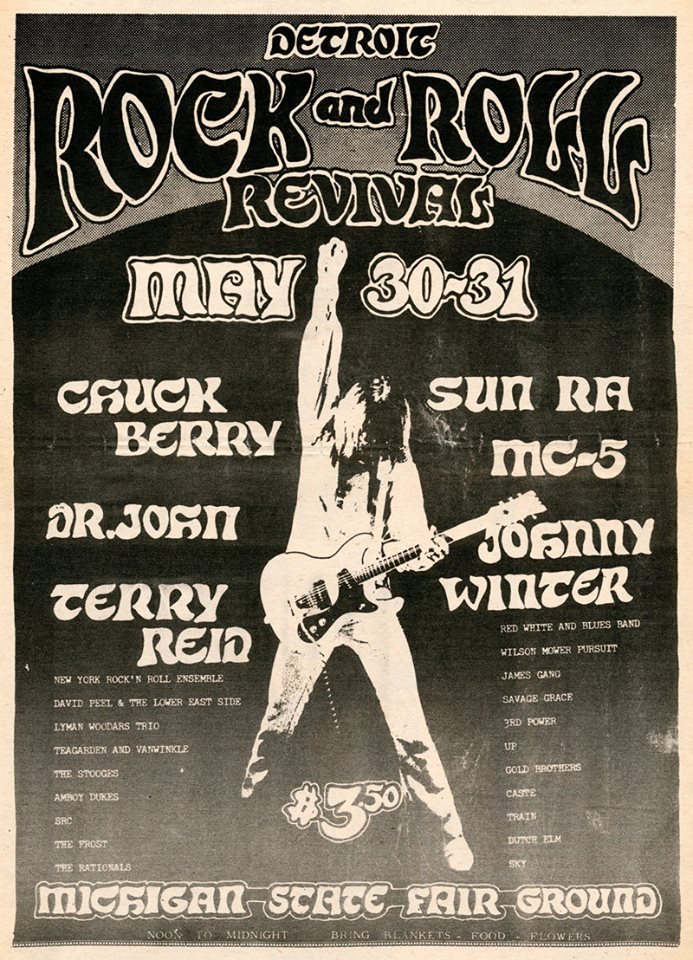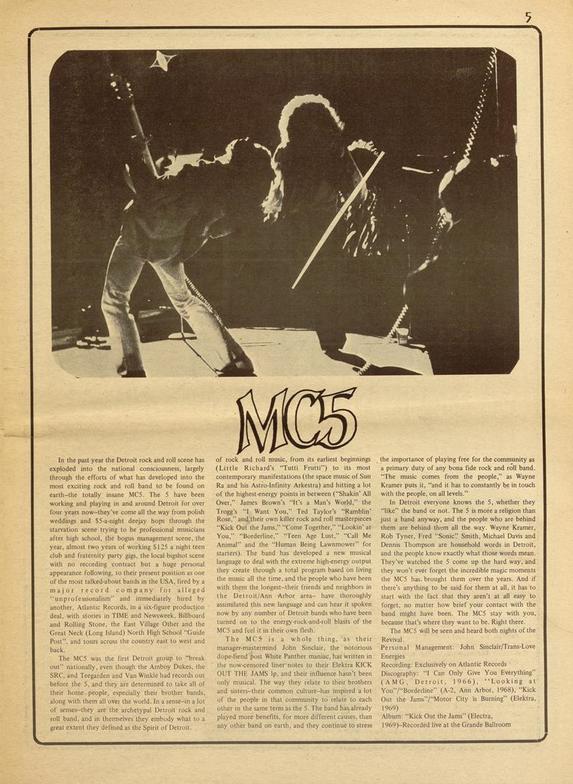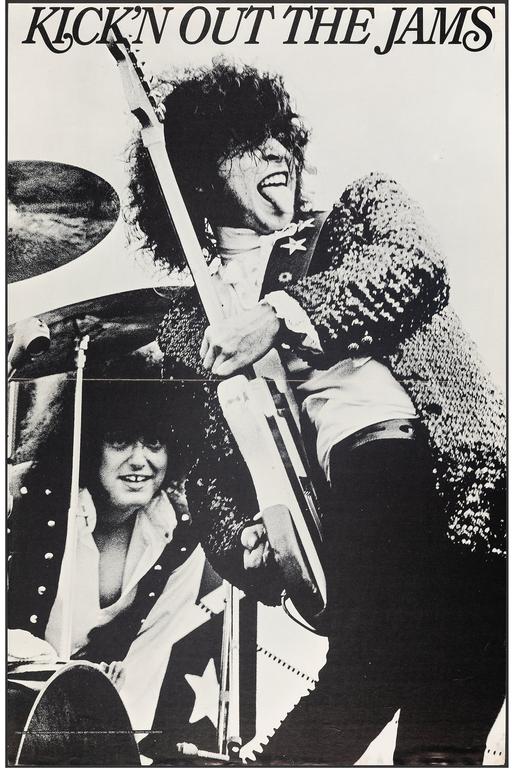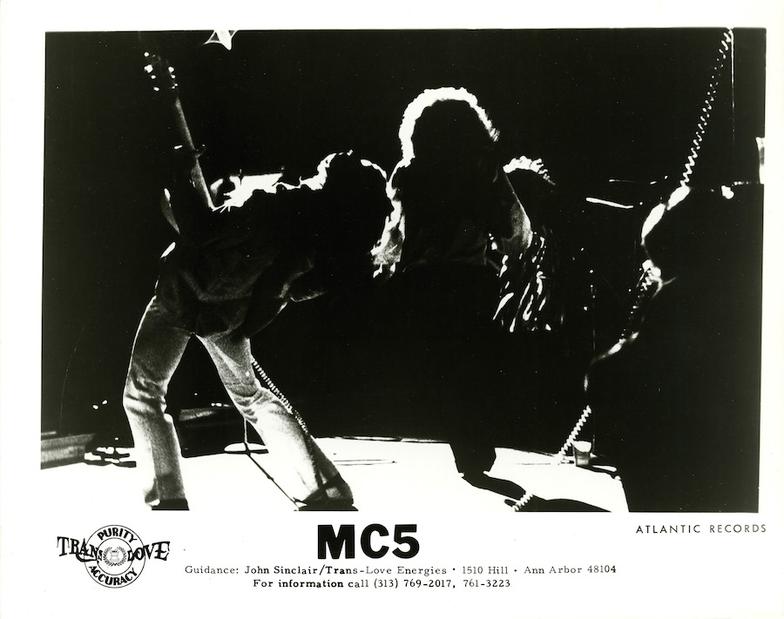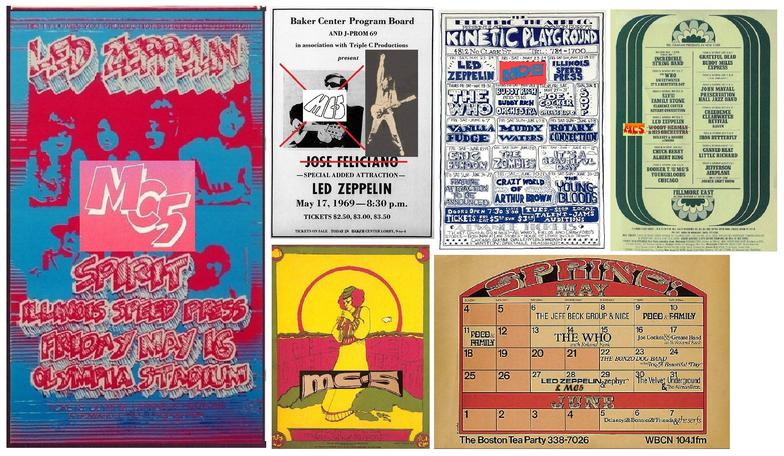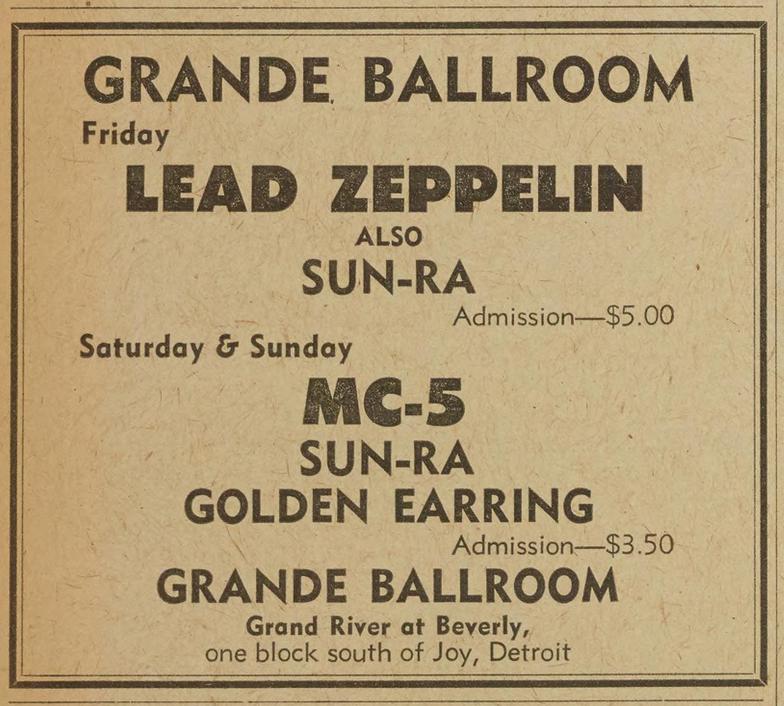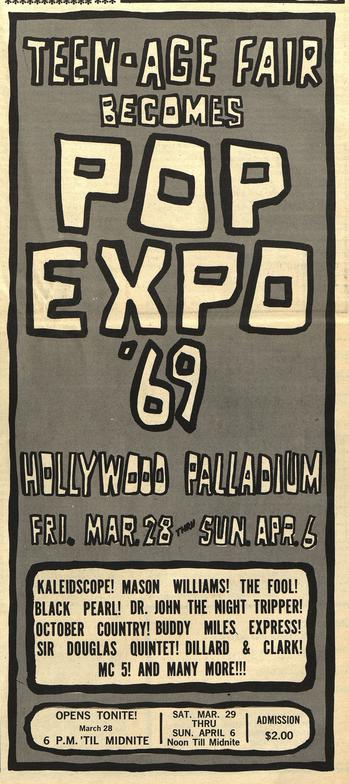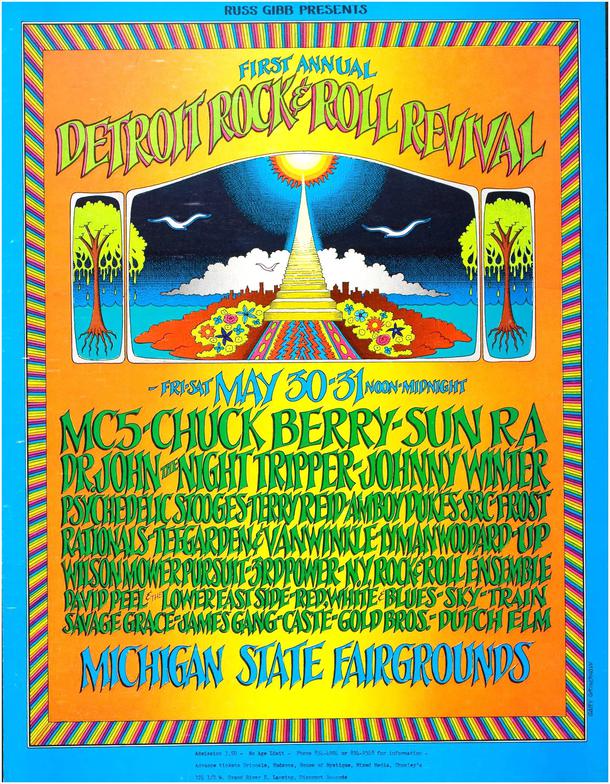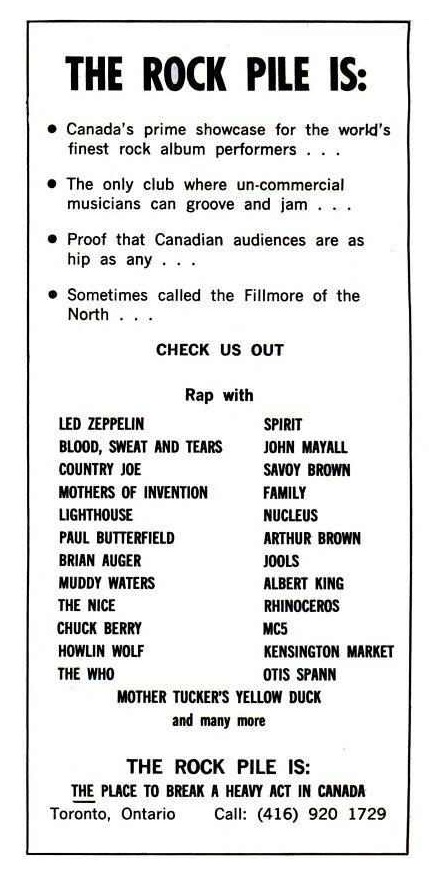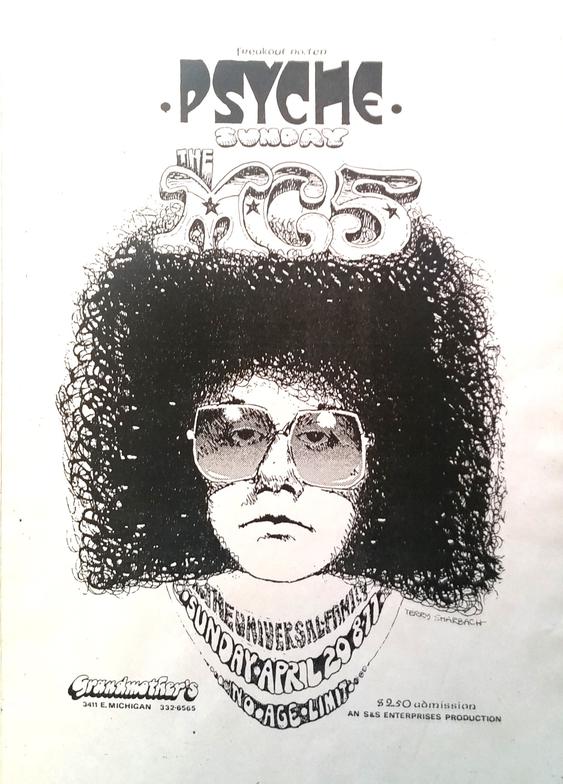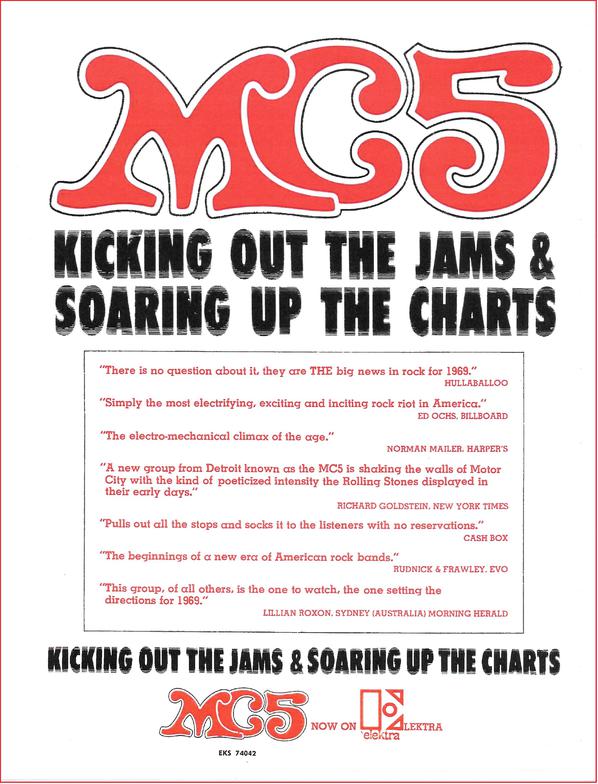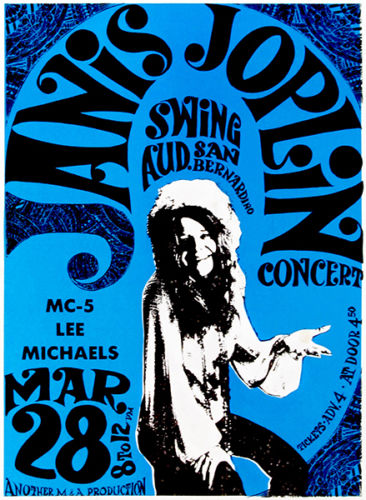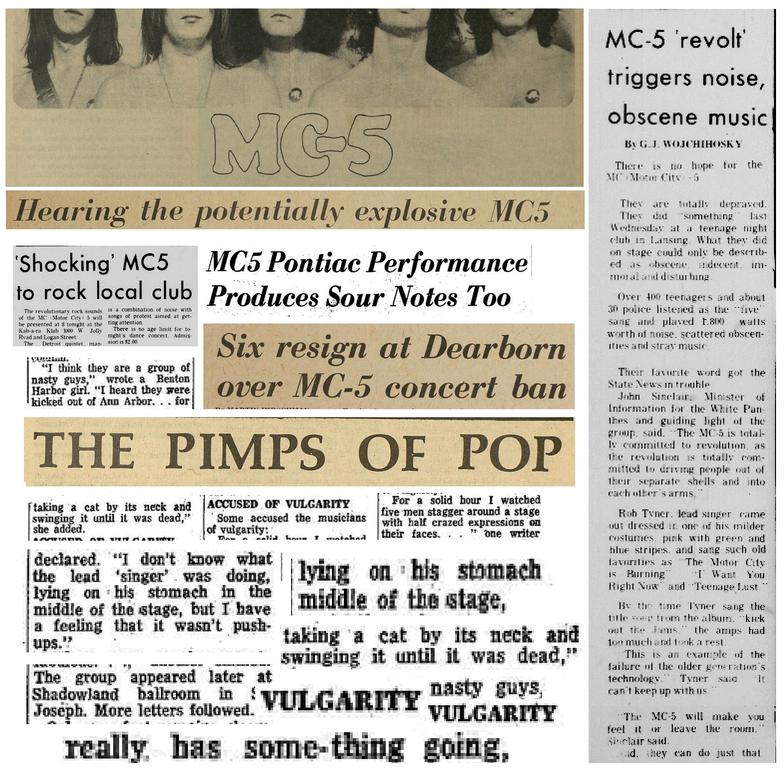Splatt Gallery
Double click here to add text.
Splatt Gallery's History of Michigan Music Posters
MC5 - Page Seven
************************************************************
John Sinclair and Danny Fields missed out on the MC5 shows in Southern California, as they had jumped on a plane from San Francisco to NYC to hash things out with Elektra Records. All up and down the coast, as Sinclair had visited radio stations, record stores, and distributors to check on the sales of the “Kick Out the Jams” album, he constantly found that they had either not received stock, or not been doing any promotion, a plan to distribute free copies through Rolling Stone magazine had been switched to using an Ike & Tina Turner album instead, at one promoter’s office they discovered the records in a trash can. The albums that were on the market were the “Brothers and Sisters” versions, no more “MF” versions, and as an even bigger affront, Sinclair’s liner notes, which had also included the forbidden word, had been removed.
Sinclair demanded that Elektra live up to their promises to support the band against any consequences of the obscenity charges, pointing out that it had been the label that had pushed for releasing the original version, with multiple assurances that the label would protect them against these very things. Elektra, still stinging from the Hudson’s debacle, decided right there and then to drop the band.
Fields tried to make the case that the label was still supporting Jim Morrison through his increasing troubles with The Doors, the band that Fields had brought to Elektra, and which had earned Fields his high status at the company. Elektra responded by firing Fields too.
Sinclair and Fields decided to go to Florida to join up with the MC5, scheduled to appear at the Easter Rock Festival in Fort Lauderdale, from March 30 - April 1, 1968, when they got the word police in Florida had orders to arrest the MC5 if they entered the state because of a crude photo of members of the band that had just been published in The Berkeley Barb newspaper.
Florida was cracking down in the aftermath of The Door’s performance in Miami at the beginning of the month. Although no arrests had been made at that concert, the state had issued arrest warrants should Morrison ever return to Florida, and there had just been a large “Miami Decency Rally” held in the area that reinforced the stand that Florida was taking that there would be zero tolerance for any shenanigans at any more rock concerts in that state. Sinclair contacted the MC5 before they left California and told them to return to Ann Arbor.
A great page of ads in the Ann Arbor Argus newspaper, with Dave Baker's Grande Ballroom ad featuring the MC5's return, April 4-5, 1969.
Detroit's first underground comic book, "Tales from the Ozone" was published in April 1969. The front and back covers were by Carl Lundgren with the back cover being a full-page cartoon of upshows at the Grande Ballroom, starting with the MC5, April 4-5, 1969.
Detail of the back cover of Tales from the Ozone comic book with Grande Ballroom cartoon panel for the MC5, April 4-5, 1969.
The 131st weekend for the Grande Ballroom, April 4-6, 1969 featured the return of Gary Grimshaw with his 58th poster for the venue, his first poster for the Grande in nine months (and one of his best). It was also the return of the MC5, in their first show back from their West Coast tour.
The MC5 headlined the first two nights, April 4-5, 1969, with Pacific Gas & Electric both nights, and Wicked Religion and the Maxx for one night each. Pacific Gas & Electric stuck around for the Sunday night show, opening for the James Gang.
Newspaper version of the Gary Grimshaw poster for April 4-6, 1969 at the Grande Ballroom, showing that black-and-white can be quite striking. One of the opening bands, The Maxx, originated in Lansing, Michigan, we’ve seen them in three of the Freak Out parties in East Lansing so far, but they had re-located to Detroit.
The MC5 – Motor City is Burning (1969)
https://www.youtube.com/watch?v=-y871cCYOyU
Nineteen bands, all of them from around Michigan with the exception of Sweetwater from Los Angeles, were featured at the Detroit Pop Festival at the Olympia Stadium, on a Monday, April 7, 1969. Promoters Mike Quatro and Pete (not Punch) Andrews, set up two stages, at opposite ends of the stadium, so there was no break between bands, and despite the bad acoustics, the show was a huge success, about 16,000 people filled the stadium, The MC5, by accounts, were in top form, tossing White Panther buttons to the crowd, and a festival model was established.
The Detroit Pop Festival launched 1969 as a summer of music festivals in Michigan like never before, following up with Grand Rapids, Saginaw (twice), Kalamazoo, Saugatuck, Detroit (two more), Bay City, Petoskey, Mount Clemons, and Midland. And then, of course, there was that thing in Woodstock, New York.
Dave Baker, from Carl Lundgren’s circle of artist friends, made the hand-lettered newspaper ad and the listing below it shows the order of the bands.
Carl Lundgren’s poster for the Detroit Pop Festival, April 7, 1969. This is actually the reprint version due to being the highest quality image we can find, but we’ll post the original (which is not that different), along with the some of the multiple bootleg versions that promoters used for other festivals.
At first, we assumed that the “Who needs Miami?” speech bubble was just a dig against a competing festival, but you may recall that Lundgren’s cover of Tales of the Ozone #1 also had a Miami-referenced speech bubble, that asks, “Does this plane go to Miami?”, which suggests the animus goes further, probably due to the Miami Decency Rally that kept the MC5 out of Florida.
The original version of Carl Lundgren’s poster for the Detroit Pop Festival, along with two bootlegs that the promoters used for Grand Rapids (green) the following day, April 8, 1969. and Saginaw (blue) the day after that, April 9.
You can see that they modified the top line on the green poster because the MC5 were not welcome in Grand Rapids, the city leaders had convinced the owners of the venue to take them off the bill.
Tickets for the Grand Rapids Michigan Pop Festival, April 8, 1969, with the MC5 scratched out.
This poster for the Detroit Pop Festival, April 7, 1969, was made by CREEM magazine artists, LINZ and Margo, with the trademark “unfinished” look of their posters.
Close-up of the band list from the CREEM magazine poster for the Detroit Pop Festival on April 7, 1969.
A newspaper ad for the Detroit (Pop) Festival at Olympia Stadium on April 7, 1969.
The re-appropriated Carl Lundgren poster, modified for the Saginaw Pop Festival on April 9, 1969.
Teaser ad, or possibly a secret show by the MC5, in the April 11, 1969 issue of the South End, the campus newspaper of Wayne State University in Detroit.
An ad for the MC5 at the Hullabaloo in Benton Harbor, Michigan on April 11, 1969.
The fifth Michigan pop festival of 1969, at Oakland Community College, April 13, 1969, featuring seven bands, headlined by the MC5.
Photo page of the MC5 in Issue #4 of CREEM magazine, April 15, 1969.
An ad in CREEM magazine #4 for a special edition single by the MC5, released on AMG Records. AMG, founded by Arnold Mark Geller had released the first MC5 single, in 1967, “I Can Only Give You Everything” backed with “One of The Guys.” This 1969 release substituted “One of The Guys” with a different original track called “I Just Don’t Know”.
The MC5 – I Just Don’t Know (1969)
https://www.youtube.com/watch?v=Fa0Pf7yLND0
Benefit show for the Ann Arbor Argus newspaper with SRC, Commander Cody, Soul Remains, and MC5 on April 17, 1969 at Avehicle, formerly the Ann Arbor Hullabaloo. Poster presumably by Dave Baker.
Another pairing of the MC5 with the Pleasure Seekers, again across the river in Canada, on April 19, 1969.
The tenth Freakout in East Lansing, Michigan, took place again at Grandmother’s and featured the MC5 on April 20, 1969. Terry Sharbach made two posters/ads for this one.
A poster/handbill by Matthew Radofsky (aka Matt Rock) for a benefit show for the Open City community collective at the Grande Ballroom in Detroit on April 23, 1969, featuring MC5, the Rationals, and the Red, White & Blues Band.
A newspaper ad, with photo by Leni Sinclair, for the benefit show for the Open City community collective at the Grande Ballroom in Detroit on April 23, 1969, featuring MC5, the Rationals, and the Red, White & Blues Band.
A second newspaper ad for the benefit show for the Open City community collective at the Grande Ballroom in Detroit on April 23, 1969.
An ad for the MC5 with the Woolies and Canned Heat at Lake Lansing Amusement Park, April 24, 1969, a show that is missing from the MC5 Gateway.
An ad for folksinger Pete Seeger at Ford Auditorium in Detroit, Michigan on April 25, 1969, above an ad for The Groove Shoppe in solidarity with the MC5.
The girls with the boys again, Pleasure Seekers and the MC5 at the Bowen Field House, Ypsilanti, Michigan, April 26, 1969. Poster by unknown artist.
The MC5 traveled down to Toledo, Ohio for two shows at the Firehouse on April 29, 1969. Poster by unknown artist.
William Aronstein, a high school student in Great Neck, New York, and huge MC5 fan, wrote a letter to Trans-Love Energies, inviting the band to play at his school. Much to his surprise, he got a letter back from John Sinclair, offering the date of May 3, 1969.
William made the poster for the show and arranged the use of the Junior High Gymnasium. Right up until the morning of the concert, some school officials familiar with the reputation of The Five tried to prevent the show, but finally acquiesced with the promise that they would be watching out for any profanity. Knowing the band’s set list, William timed it so that the officials were upstairs counting the money when the KOTJMF moment happened.
Newspaper ads in the East Village Other newspaper for the MC5 at Ungano’s in NYC for three nights, May 6-8, 1969.
High school student William Aronstein lucked out in getting the MC5 to play at his school in Great Neck, New York, because in those days you could write a letter to your favorite band and have them show up, and because the MC5 were scheduled for a week of shows in New York City.
Following the Great Neck High School stop-over, they played three nights at Ungano’s in NYC, a show for The Temple Free Press in Philadelphia, and this benefit for the Liberation News Service back in NYC, at the Hotel Diplomat with Children of God on May 13, 1969. Poster artist unknown.
Variation of the poster for the Liberation News Service Benefit with the MC5 and Children of God at the Hotel Diplomat in NYC on May 13, 1969.
Not only was Jimmy Page’s new band not yet popular enough to fill the Olympia Stadium, promoters could still not get the band name quite right yet either. When they rescheduled over to the smaller Grande Ballroom, they ended up in an unlikely pairing with Sun Ra.
The 137th weekend at the Grande Ballroom, May 16-18, 1969 featured Gary Grimshaw’s 61st poster for the venue. The final line-up for these shows was Led Zeppelin, Golden Earring, and Sun Ra for two shows on May 16th, with MC5, Sun Ra and Golden Earring on May 17-18, 1969.
The backside of Gary Grimshaw’s card for Sun Ra at the Grande Ballroom, May 16-18, 1969 with the Grande Ballroom imprint and the show list.
Poster/flyer for the first Sunday Summer Free Concert of the 1969 season, the third season of free concerts “in the park” in Ann Arbor. Held on May 18, 1969, at West Park, the line-up featured Soul Remains, Amboy Dukes, MC5, Stooges, Kraak, Candle, and UP, with poet Diane Di Prima. The poster/flyer was made by Linda Carpenter.
The MC5 at the Bowling Green Music Festival in Bowling Green, Ohio, May 21, 1969, with Kraack, Bridge, Fred, Rail, and Just Another Band.
Veni, vidi, vici - They came, they saw, they conquered. The MC5 got a lot of press when they headlined the first annual Bowling Green Pop Festival in Bowling Green, Ohio on May 21, 1969, with a story the night of the show, a review of the show the next night, and the aftermath still lingered for one more story on the second night following.
A poster by an unknown artist for MC5 with The Underground Wall at the Clawson Hideout, May 23, 1969.
When the MC5 returned from their West Coast tour, at the beginning of April, they moved out of the Hill Street commune and into a farm house in nearby Hamburg, Michigan. So, there was plenty of room for Sun Ra and his large band of “the weirdest negroes” to move in with the Ann Arbor Trans-Love group, which they did for half of the month of May, 1969.
While living at John Sinclair’s Trans-Love commune on Hill Street in Ann Arbor in May 1969, Sun Ra lined up some local gigs, including two nights at the Canterbury House, May 23-24, 1969.
Sun Ra followed up their two nights at the Canterbury house with a show with their friends, the MC5, at the Ann Arbor Armory, May 25, 1969.
Born Herman Poole Blount, he was named after magician Black Herman, a prominent performer in the early 1900’s and a favorite of Ra’s mother.
The relationship with Detroit went back as far as 1965 when John Sinclair had traveled to New York City to interview Sun Ra for The Fifth Estate, two years later, Sinclair brought them to Wayne State University for their first Michigan appearance. Sun Ra had been given writing credits on the MC5 album, as the song "Starship" was built around a Sun Ra poem.
And as a follow-up to the Grande Ballroom shows, Sinclair had gotten them on the bill for the largest outdoor pop festival to date in Detroit, The First Annual Detroit Rock & Roll Revival at the Michigan State Fairgrounds.
Sun Ra – Rocket #9 (1966)
https://www.youtube.com/watch?v=GcoyJGt1Trs
A quick gig at Punch Andrews’ Silverbell Hideout in Auburn Hills, Michigan, May 29, 1969, for the MC5, the night before the Rock & Roll Revival, with a poster by an unknown artist.
The First Annual Detroit Rock & Roll Revival at the Michigan State Fairgrounds on May 30-31, 1969 was Michigan’s biggest rock show to date. Perhaps not in terms of attendance, but in the number of acts (around 35) and in being a multi-day, outdoor event.
And it was a success. Russ Gibb achieved another accomplishment in producing an event of this scope, and indeed, the line-up reflected the aesthetic of the Grande Ballroom, with Sun Ra and Dr. John having just come off recent performances at the ballroom, and with Grande regulars, MC5, Stooges, Frost, SRC, Rationals, Lyman Woodard, Third Power, Savage Grace, James Gang, Amboy Dukes.
It was the first Michigan appearances for Johnny Winter and David Peel & the Lower East Side, and although not listed on the poster, it was the premier appearance of the new band under Terry Knight’s management, the core of the former Pack, now a trio called Grand Funk Railroad.
The Grande Ballroom was, in fact closed for this weekend, the first weekend that the doors had been shut since the opening in October, 1966. On Sunday night, after the conclusion of the State Fairground show, Gibb held a private party and jam session at the ballroom for “the press, participants, and “other beautiful people” of the Detroit Rock and Roll Revival”.
Gary Grimshaw’s poster is also a milestone. This was his first poster that looked dramatically different from his Grande Ballroom posters, or the work he’d done for The Fifth Estate, The Oracle, and other publications. Like his friend, Carl Lundgren, Grimshaw had spent a large portion of early 1969 working in the underground comics medium, and the clean line, cartoon style is evident here. And the colors! From the rainbow inner frame to the bleed from yellow to orange, starkly contrasted by the blue outer border, to the elegant hand-lettering, it was the most eye-pleasingly beautiful concert poster of any we’ve seen before.
Grimshaw has said that he felt his best work was during the 1970’s and the poster for the First Annual Detroit Rock & Roll Revival sets the style for the posters to come.
Johnny Winter – Highway 61 Revisited (1969)
https://www.youtube.com/watch?v=yclRjptWlW8
A handbill version, and newsprint version, of Gary Grimshaw’s poster for the First Annual Detroit Rock & Roll Revival at the Michigan State Fairgrounds on May 30-31, 1969.
Full-page newspaper ad for the May 30-31, 1969 Detroit Rock and Roll Revival at the Michigan State Fairgrounds, with Leni Sinclair’s classic photo of MC5 guitarist Fred Smith. This photo was also used for the cover of David Carson’s book, “Grit, Noise and Revolution”.
Dennis Frawley, who with his partner Bob Rudnick had brought their Kokaine Karma radio from WFMU in New Jersey to WABX in Detroit, wrote a glowing review of the Revival in The Fifth Estate, pointing out that this had been a rock and roll festival, not a pop festival, and attributed it to only being able to come out of Detroit, which he lovingly referred to as “the crotch of the nation”.
The MC5 page from the show preview issue of CREEM magazine for the Rock & Roll Revival, May 30-31, 1969.
An MC5 poster published by Pandora Publications in Wayzata, Minnesota, photo credited to Mike Barich, taken at the Rock & Roll Revival at the Michigan State Fairgrounds, May 30-31, 1969.
Poster History of the MC5 - continues - HERE
An Atlantic Records promo photo for the MC5 that uses the same photograph as on the MC5 page in CREEM magazine’s program issue for the Detroit Rock and Roll Revival, May 30-31, 1969.
So, we got to thinking, how smart would it have been for Atlantic Records to put their newly acquired MC5 (signed on May 15, 1968) as support for dates on label-mates Led Zeppelin’s North American Spring 1969 tour. Starting off, the addition of the MC5 to the bill on Zeppelin’s Detroit show on May 16, 1969, might have added enough additional draw to keep the show at Olympia Stadium (the Zeppelin show was moved to the Grande Ballroom due to low ticket sales).
MC5 could have next opened for Led Zeppelin in Athens, Ohio on May 17, certainly a better match with Zeppelin than Jose Feliciano, right?
Two shows at the Kinetic Playground in Chicago, May 23-24, would have improved the bill of Led Zeppelin with Pacific Gas Electric. The nice double bill of Led Zeppelin and The Who in Columbia, Maryland on May 25 would have been an even nicer triple-bill of Led Zeppelin, The Who, and MC5.
The MC5 could have opened for Led Zeppelin for three nights at the Boston Tea Party, May 27-29, a venue where the MC5 had already been well received.
And finally, at the Fillmore East in NYC, May 30-31, the MC5 would have been a much better match with Led Zeppelin than Woody Herman & his Orchestra (WTF?) right? Although Bill Graham would have probably nixed that, plus the triumphant Rock & Roll Revival at the Michigan State Fairgrounds was on the same dates.
Just thinking, now what if Led Zeppelin’s notorious manager Peter Grant had taken the MC5 under his wing?
The MC5 concluded their West Coast itinerary with a slot at the “Pop Expo ‘69” in Hollywood, California, during the weekend of March 28-30, 1969. During their week in Southern California, the band had also gone into the Elektra Records studio in Los Angeles and recorded tracks for their second album. The MC5 may have performed early on March 28 and still made it to the gig with Janis Joplin that night.
An ad in the special spotlight section on Canada in the May 24, 1969 issue of Billboard magazine for the Rock Pile club in Toronto with the MC5 listed along with the heavy hitters.
A collection of some of the press, mostly negative, generated by the MC5 from February through May 1969.
Full-page Elektra Records ad in the March 22, 1969 issue of Billboard magazine, which shows that the label was spending money to promote the first MC5 album, although by the time of this publication they may have already dropped the band because of the “Fuck Hudson’s” debacle. This may be the only full-size ad for the MC5 to be published in Billboard magazine.
Janis Joplin, back in California following her appearance in Ann Arbor two weeks earlier, happened to catch up again with the MC5 at this show in San Bernardino, March 28, 1969. Poster is by California artist Kate Christensen, using a photograph by Jim Marshall.


